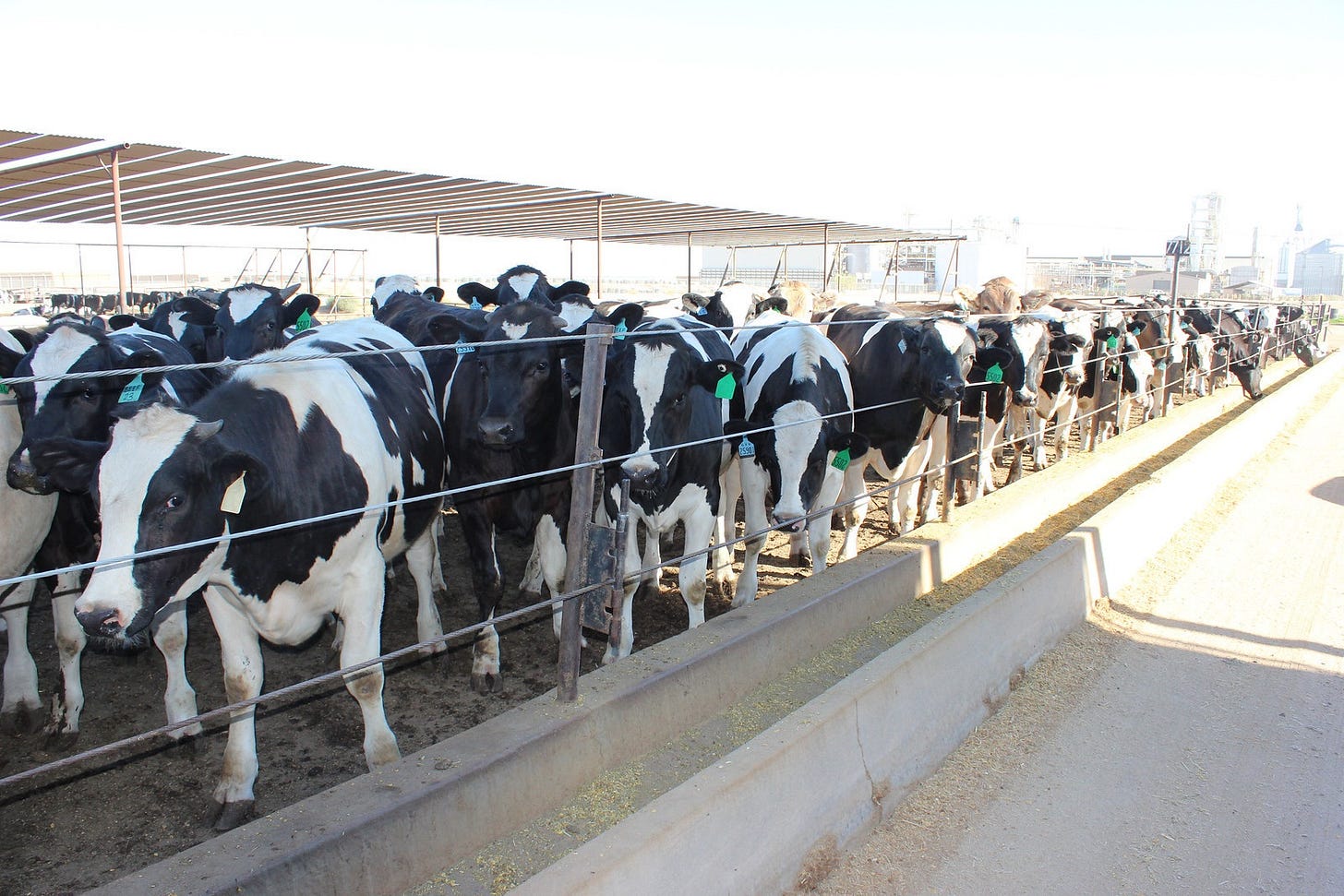If dairy is the new beef, are cow-calf producers necessary?
Prime Future 63: the newsletter for innovators in livestock, meat, and dairy
New to Prime Future? Subscribe here for weekly content to your inbox. Welcome!
Hypothesis: the biggest threat to cow-calf producers is neither packer consolidation nor alternative proteins. The biggest threat to cow-calf producers is dairy producers who are increasingly deploying the 'beef on dairy' genetics strategy which will allow them to own the beef calf market, creating an existential threat for cow-calf producers.
That was my hypothesis when I sat down to write this piece.
Before we get into whether this hypothesis is reasonable or not, here’s a quick review of the beef on dairy strategy:
“In dairy herds, a sustainable breeding strategy could combine usage of sexed semen to generate replacement heifers only, and usage of beef semen on all dams that are not suitable for generating replacements. This results in increased genetic gain in dairy herd, increased value of beef output from the dairy herd, and reduced greenhouse gas emissions from beef.”
(We recently looked into the 3 mega phases of genetics revolution in dairy cattle that led to the beef on dairy trend.)
One more idea before we get to whether cow-calf producers have a future or not, an idea from “Loonshots: How to Nurture the Crazy Ideas That Win Wars, Cure Diseases, and Transform Industries” is that innovation falls in two buckets:
P-type innovation which are product innovations, like the invention of the jet engine
S-type innovation which are business model innovations, like the idea of an airline that would not use the hub & spoke model and only offer low cost direct flights
The interesting thing about the beef-on-dairy strategy is that the two enabling technologies were P-type innovations: genomics and sexed semen.
But now as producers adopt those products, we’re looking at S-type innovations playing out in real time which is likely to lead to more S-type innovations across beef and dairy value chains.
Back to my hypothesis. Let’s do some napkin math, and use the most extreme assumption that 100% of US dairy producers will apply the beef on dairy strategy to 100% of their herd. (For the purpose of thinking about the potential impacts of a trend, it’s helpful to play it out to the extremes even if highly unlikely.)
Using extreme and very round numbers, here's some math:
There are 10 million dairy cows in the US. Let's say 30% of those cows are replaced by heifers every year. All 10 million cows need to have a calf, but only 3M of those calves need to be female to be kept as replacement heifers and maintain current production levels (10M * .3 = 3M). Let's say the remaining 7M calves NOT being kept as replacement heifers flow into the beef value chain (10M - 3M = 7M).
If today there are ~5M dairy calves that flow into the beef supply chain already, or ~50% of the 10M dairy calves born annually then it looks like beef-on-dairy only adds 2M additional beef-dairy cross calves per year into the beef value chain (7M - 5M = 2M). However a big caveat is that there is already a reasonable % of the 5M dairy calves that are actually beef-dairy crosses, though there’s no good estimate of what that number is. Regardless…
If ~25M beef animals are finished in feedyards annually, and the most dairy can contribute (in pure dairy or beef-dairy crosses) is 7M then that leaves a minimum of 18M calves per year needed from cow-calf producers.
Napkin math shows that my hypothesis that dairy producers pose an existential threat to cow-calf producers is wrong.
Cow-calf producers will continue to be a necessary segment of the beef value chain.
But even if beef-on-dairy does not create an existential threat to cow-calf producers, there will be implications and ripples felt across the beef and dairy industries. This week’s newsletter is the start of a series exploring those implications and ripples.
Here are some questions I'm interested in:
How viable is the sustainability hypothesis behind on beef-on-dairy? Cargill is making a bet on beef on dairy as a sustainability play, will others?
What are the limiting factors for beef-on-dairy growth?
Alternative milk now has ~16% share of the milk market, if beef and dairy become even more enmeshed than they already are, how could change in milk demand impact beef? If the primary link today is ground beef, what happens when the link expands?
What does it mean for cattle feeders to have 3 distinct types of potential calves to feed: beef, dairy, beef-dairy crosses? For packers to have those 3 types of fed cattle to process?
What are the positive/negative impacts felt through the value chain from an increase in beef on dairy? From dairy producers to feedyards to packers.
How will profit drivers be impacted? From live performance metrics to carcass yield and grade. How will management of these metrics change?
If you have insights or opinions on any of those questions, please reach out - I'd love to get your thoughts. Or, if you have other questions to explore about this space.
An important caveat to this conversation is that beef-on-dairy is not new. It was first discussed in the early 2000’s and how slowly increased over time. But it feels like we’re at an inflection point and adoption is accelerating rapidly.
“The future is here, it’s just unevenly distributed.”
I’m interested in all things technology, innovation, and every element of the animal protein value chain. I grew up on a farm in Arizona, spent my early career with Elanco, Cargill, & McDonald’s before moving into the world of early stage startups.
I’m currently on the Merck Animal Health Ventures team. Prime Future is where I learn out loud. It represents my personal views only, which are subject to change…’strong convictions, loosely held’.
Thanks for being here,
Janette Barnard




